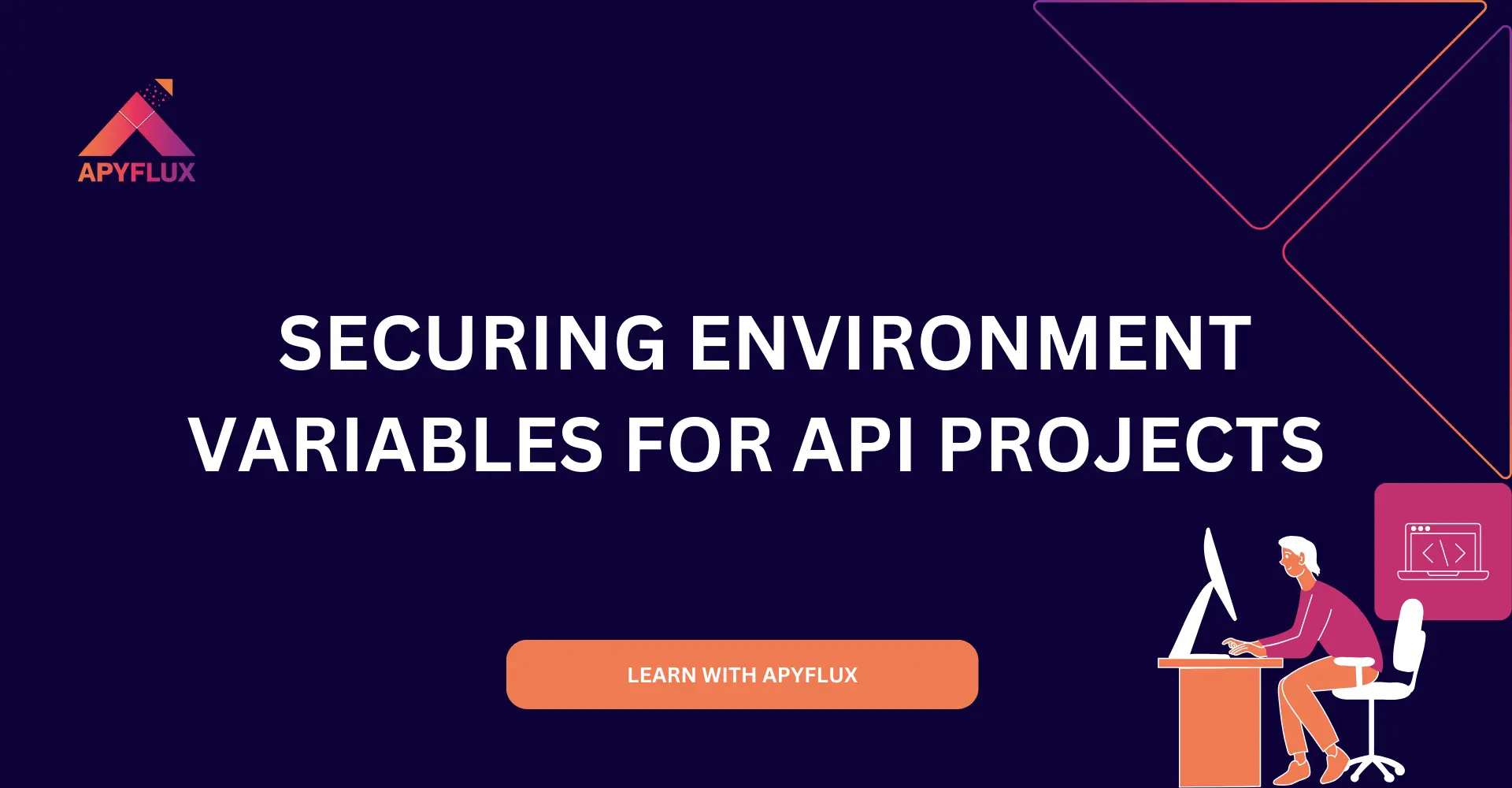
In API development, managing sensitive information such as API keys, database credentials, and secret tokens is crucial. Environment variables provide a secure and efficient way to handle this data without hardcoding it into your project. Ensuring these variables are properly created and secured is a key aspect of building a robust and scalable API architecture. This blog delves into the importance of environment variables, how to set them up, and best practices to secure them for API projects.
Environment variables are key-value pairs used to store configuration data and secrets outside your application’s codebase. They are accessed by your application during runtime, allowing for flexibility and security. Common Examples of environment variables in API project include:
For instance, instead of hardcoding a database URL in your application, you can store it as an environment variable:
DB_URL=mongodb://username:password@localhost:27017/mydatabase
Failing to secure environment variables can lead to disastrous consequences, including data breaches and unauthorized access to sensitive information. For example, accidentally pushing .env files containing API keys to public repositories has led to several high-profile breaches.
Properly securing environment variables protects your API from:
When working with APIs, handling sensitive information is crucial. Hardcoding sensitive data like API keys or database credentials directly in your code is a big no-no. That’s where environment variables come into play. They provide a secure and flexible way to manage such information, ensuring that your application remains both secure and scalable. Let’s walk through the steps to set up environment variables.
Step 1 : Identify Sensitive Data
First, and foremost, you need to identify the sensitive data that you don’t want hardcoded in you application
Begin by listing all sensitive information your API requires. Common examples include:
By identifying this data, you can ensure it is securely managed and not exposed in your codebase.
Step 2: Create an Environment File (.env)
Next, create a .env file to store your environment variables. This file should be well-organized and use clear, descriptive names for each variable.
A .env file is a simple text file used to store environment variables.
Example:
DB_URL=mongodb://username:password@localhost:27017/mydatabase
API_KEY=abc123xyz
SECRET_KEY=supersecretkey
The .env file format is simple: each line contains a key-value pair separated by an equals sign.
Best Practices:
Step 3: Load Environment Variables into Your Application
To load environment variables into your application, you can use libraries like dotenv in Node.js or their equivalents in other programming languages.
nmp install dotenv
Create a .env File: Add your variables as shown earlier.
Load variables in your code:
At the very top of your entry file (e.g., index.js), add the following line to load your environment variables:
require('dotenv').config();
const dbUrl = process.env.DB_URL;
console.log(`Database URL: ${dbUrl}`);
const apiKey = process.env.API_KEY;
const dbUrl = process.env.DATABASE_URL;
console.log(`API Key: ${apiKey}`);
console.log(`Database URL: ${dbUrl}`);
Environment variables are essential for managing sensitive information in API development. However, securing these variables is crucial to protect your application from potential security breaches. Here are some best practices to ensure your environment variables are secure.
1. Do not Commit .env files to Version Control
It’s crucial to prevent accidental exposure of your .env files by using .gitignore to exclude them from version control
Add .env to your .gitignore file to prevent accidental exposure:
.env
By doing this, you reduce the risk of exposing your sensitive information to unauthorized parties.
2. Use Secrets Management Tools
Using Secrets management tools can significantly enhance the security of your environment variables. These tools are designed to store, manage, and control access to sensitive information. Some popular options include:
These tools offer features like secret versioning, rotation, and access control, making them ideal for managing sensitive data in production environments.
3. Set Up Permissions and Access Control
Limit access to environment files for authorized developers and administrators. Implementing proper permissions and access control helps ensure that sensitive information is only accessible to those who need it. This can be achieved by using role-based access control (RBAC) and setting up policies that define who can access, modify, or manage your environment variables.
4. Encrypt Sensitive Variables
Use encryption to add an extra layer of security for your secrets. Even if the environment files are accessed by unauthorized parties, encryption ensures that the data remains un readable without the decryption key. Various encryption methods, such as AES (Advanced Encryption Standard), can be used to secure your sensitive data.
For instance, you can use the crypto module in Node.js to encrypt and decrypt environment variables:
const crypto = require('crypto');
const algorithm = 'aes-256-ctr';
const secretKey = 'your_secret_key';
const iv = crypto.randomBytes(16);
const encrypt = (text) => {
const cipher = crypto.createCipheriv(algorithm, secretKey, iv);
const encrypted = Buffer.concat([cipher.update(text), cipher.final()]);
return {
iv: iv.toString('hex'),
content: encrypted.toString('hex')
};
};
const decrypt = (hash) => {
const decipher = crypto.createDecipheriv(algorithm, secretKey, Buffer.from(hash.iv, 'hex'));
const decrypted = Buffer.concat([decipher.update(Buffer.from(hash.content, 'hex')), decipher.final()]);
return decrypted.toString();
};
5. Rotate Keys Regularly
Regularly updating and invalidating old credentials minimizes the risk of unauthorized access. Implement a key rotation policy to ensure that your secrets are regularly updated. This can be automated using the secret management tools mentioned earlier.
For example, AWS Secrets Manager offers a built-in feature for automatic secret rotation, ensuring your secrets are regularly updated without manual intervention.
Testing environment configurations ensures smooth transitions between environments. For example, you can test a database connection:
const mongoose = require('mongoose');
mongoose.connect(process.env.DB_URL, { useNewUrlParser: true, useUnifiedTopology: true })
.then(() => console.log('Connected to the database'))
.catch(err => console.error('Database connection failed', err));
Environment variables are essential for secure and efficient API development. By properly creating and securing them, you can safeguard your API architecture and sensitive data. Adopt best practices and utilize tools to manage secrets effectively, ensuring your API is robust and scalable. Prioritize security as an ongoing process to adapt to the ever-evolving API development landscape.
Hi there!
Let's help you find right APIs!